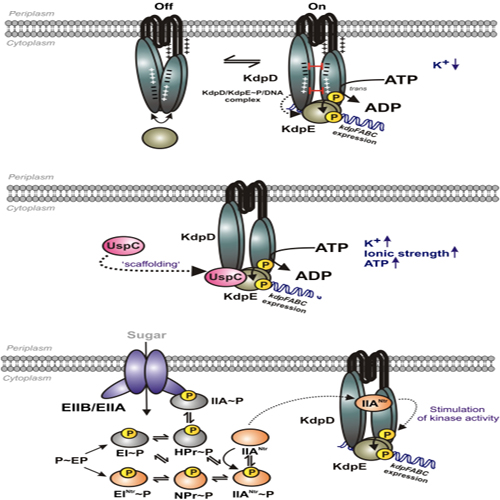The complexityofthe‘simple’two-component systemKdpD/KdpE in Escherichia coli
20-Jan-2010
FEMS Microbiology Letters, 2010, 304, 2, 97 - 106 published on 20.01.2010
FEMS Microbiology Letters, online article
FEMS Microbiology Letters, online article
The KdpD/KdpE two-component system of Escherichia coli activates the expression of the kdpFABC operon encoding the high-affinity K+ uptake system KdpFABC in response to K+ limitation or salt stress. Earlier, it was proposed that the histidine kinase KdpD is a turgor sensor; recent studies suggest that KdpD integrates three chemical stimuli from the cytoplasm. The histidine kinase KdpD contains several structural features and subdomains that are important for stimulus perception, modulation of the kinase to phosphatase ratio, and signaling. The response regulator KdpE receives the phosphoryl group from KdpD and induces kdpFABC transcription. The three-dimensional structure of the receiver domain was resolved, providing insights into the activation mechanism of this transcriptional regulator. Two accessory components, the universal stress protein UspC and the phosphotransferase system component IIANtr, are known to interact with KdpD, allowing the modulation of kdpFABC expression under certain physiological conditions. Here, we will discuss the complexity of a 'simple' two-component system and its interconnectivity with metabolism and the general stress response.











